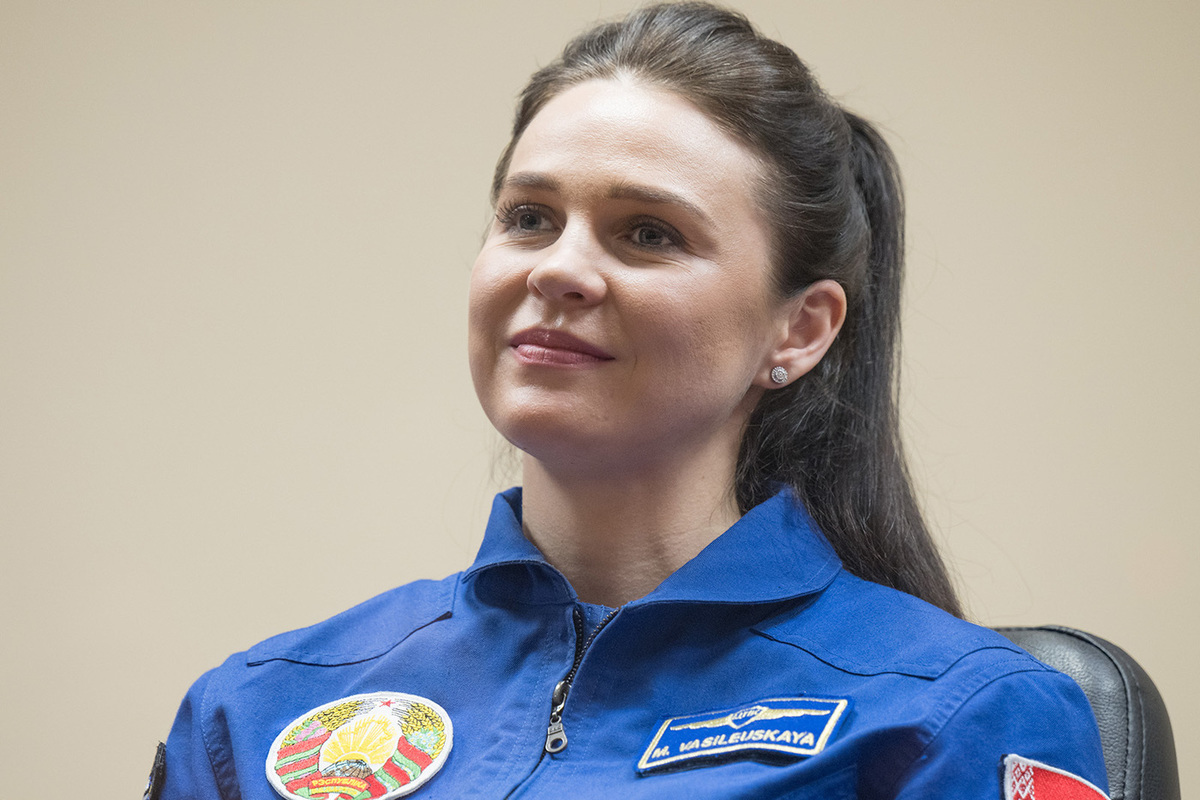Soyuz MS-25 docked to the Russian segment of the ISS: the first female cosmonaut from Belarus arrived
[ad_1]

The first female cosmonaut from Belarus, Marina Vasilevskaya, will have to find out how the human protein lactoferrin behaves in space and prepare fermented milk products in space. The manned transport spacecraft Soyuz MS-25 with the 21st visiting expedition successfully docked on Monday, March 25, to the Prichal hub module of the Russian segment of the International Space Station.
The ship’s crew includes Russian Oleg Novitsky, a space flight participant from Belarus, Marina Vasilevskaya, a flight attendant by profession, and NASA astronaut Tracy Dyson, a participant in the 71st long-term expedition to the station. Let us recall that their ship, albeit on the second attempt, successfully launched on March 23 from the Baikonur Cosmodrome.
Instead of two orbits around the Earth (if the launch had taken place on March 21), the cosmonauts had to make more than 34 orbits – these were the conditions of the new ballistic calculations for the reserve launch day. After all, the ship and the ISS had to be at a certain angle at the time of launch into orbit.
“Maybe this isn’t so bad,” cosmonaut Sergei Krikalev, advisor to the President of the Russian Federation and head of the Roscosmos directorate for manned programs, encouraged the newcomer Vasilevskaya before the launch. Experienced explorers know that a two-day flight to the ISS allows them to prepare for work in zero gravity even before arriving at the station.
The docking with the ISS took place automatically. It would be a good time to get yourself in order after a long flight… As it turned out even before the start, Marina Vasilevskaya’s personal bag didn’t fit too many things – she was allowed to take only 1.5 kilograms with her. The purse of the first space lady of Belarus, according to her, included: photographs of loved ones, the country’s flag, souvenirs, and only powder for cosmetics. Tracy Dyson promised to share everything else, who flew in for a longer stay, and therefore took more things. While still on Earth, Marina promised upon arrival to perform the song of the group “Syabry” “Come to Belarus”.
Now let’s talk about something serious. If anyone thought that Vasilevskaya flew to the station just to sing and pose near the porthole against the backdrop of her beloved Belarus, they are mistaken. The scientific flight program developed by Roscosmos and the National Academy of Sciences of Belarus includes seven experiments, including five research and two educational. This is a lot for a two-week expedition that will last until April 6.
According to Vasilevskaya, she needs to have time to conduct detailed photo and video shooting of the Earth, a number of biotechnological experiments, including “Lactoferrin” and “Proxibiotic”.
“Lactoferrin is a human protein (responsible for immunity – Author). We will test its effect on microorganisms under space flight conditions,” Vasilevskaya explained before the launch at Baikonur.
It is also planned to exhibit various strains of lactic acid microorganisms, bifidobacteria and their combinations, as well as the production of fermented milk products in the multipurpose laboratory module of the ISS “Science”. The resulting samples will then be returned to Earth and transferred to specialists from the Scientific and Practical Center of the National Academy of Sciences of Belarus for Animal Husbandry, the Institute of Microbiology and the Institute of Meat and Dairy Industry for post-flight scientific research. What is it for? For the future production of food for astronauts, which Belarusians apparently want to develop.
Help “MK”. Marina Vasilevskaya is the fourth native of Belarus in space. Before her, the path to the stars was paved by Peter Klimuk, Vladimir Kovalenok and Oleg Novitsky.
The crew of the Soyuz MS-25 also brought to the ISS everything necessary for the world’s first bioprinting in space of tubular organs – branches of blood vessels, for example, the aorta, using a bioprinter delivered earlier on board. In previous expeditions, Russian cosmonauts have already created tissues of cartilage, pancreas and bone on it. The printing of organs will be carried out by Oleg Kononenko.
As for Vasilevskaya, when seeing her off, President of Belarus Alexander Lukashenko advised “not to strain too much with experiments.” His parting words were quoted by the telegram channel “Pool of the First”: “If there is no time, we will complete the experiments on Earth.”
“I won’t sleep, but I’ll do everything,” Vasilevskaya answered him. And experienced cosmonaut Oleg Novitsky immediately drew attention to this mistake: “You definitely need to sleep!”
It is planned that Oleg Novitsky and Marina Vasilevskaya will return to Earth on the Soyuz MS-24 spacecraft with NASA astronaut Laurel O’Hara, and Tracy Dyson will continue the flight until September 23 and land on the Soyuz MS-25 spacecraft together with Russian cosmonauts Oleg Kononenko and Nikolai Chub.
[ad_2]
Source link








